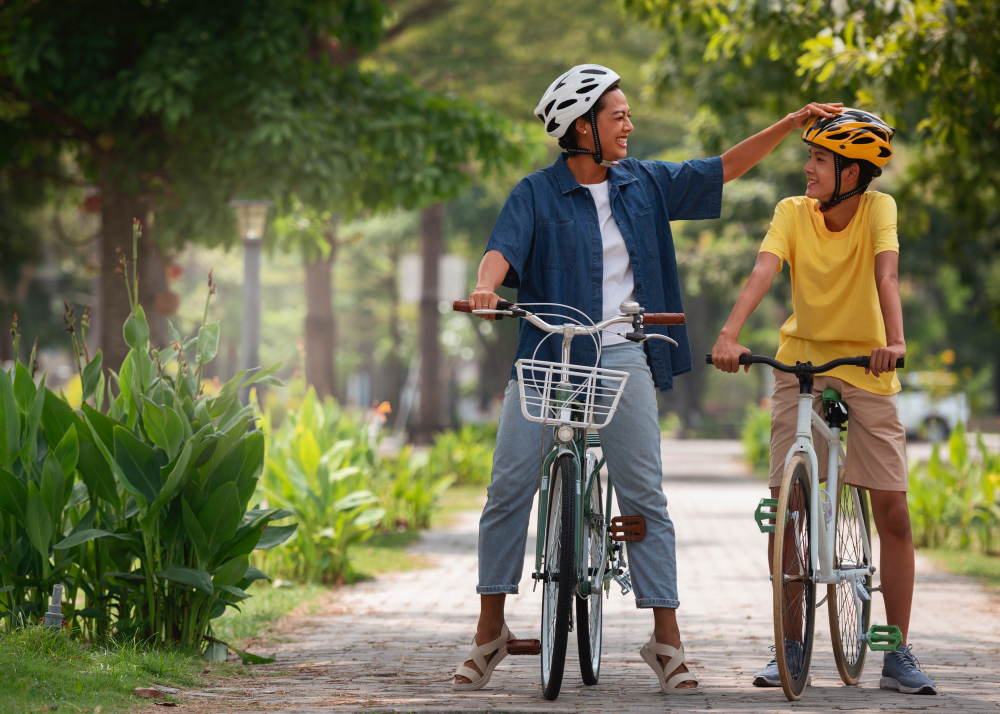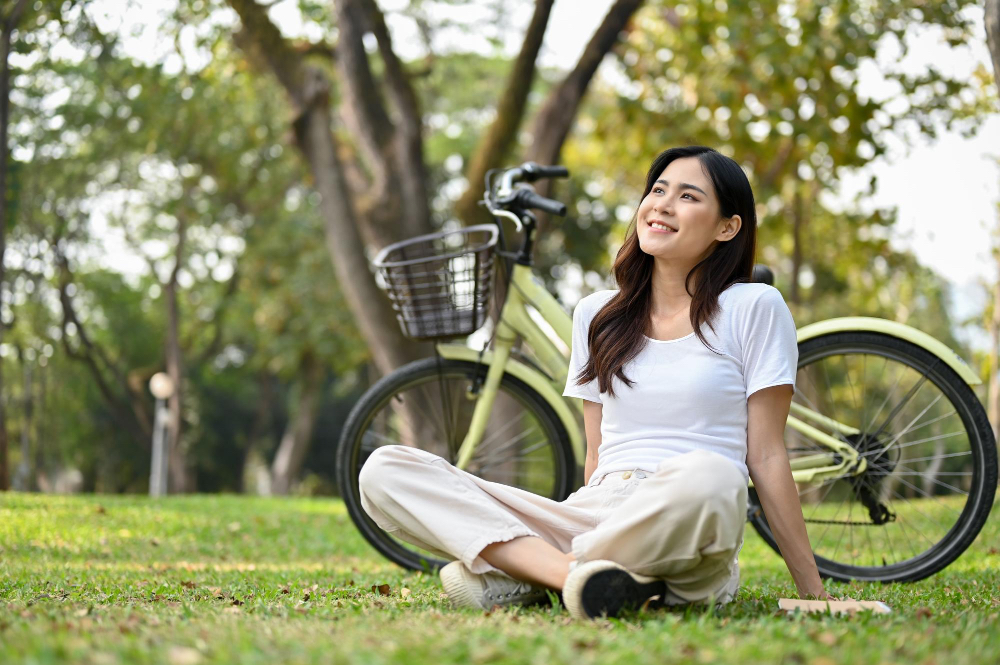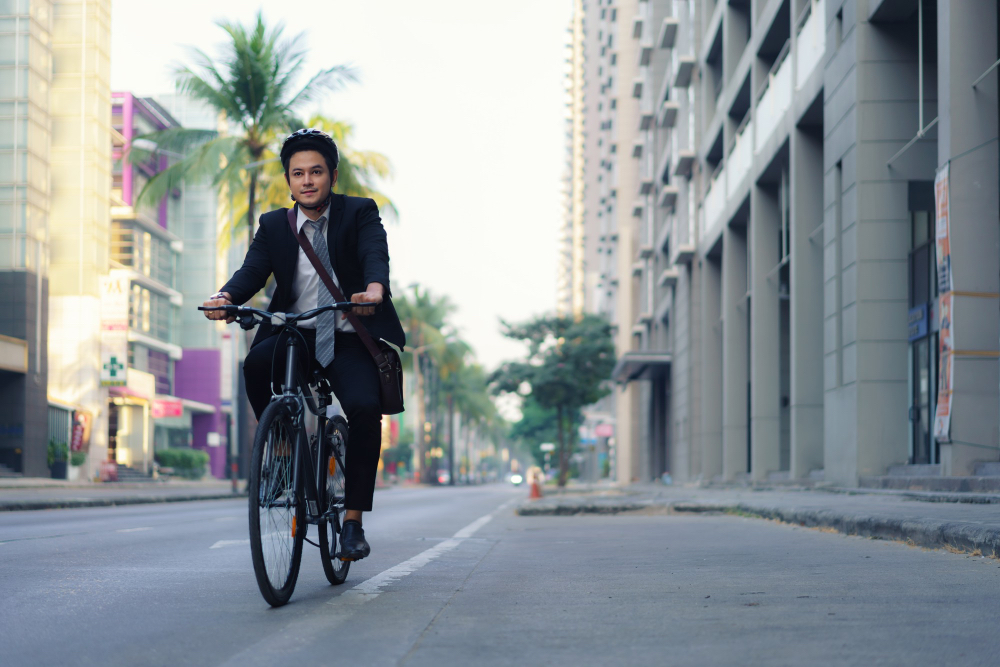Pedal Around: The Most Bike-Friendly Cities in the Philippines

More recently, Filipinos have been cycling their way around, finding it a practical and eco-friendly alternative for transportation. According to data from Inquirer, the number of searches for bicycles among Filipinos tripled from 503,720 in April 2020 to 1,168,520 in May of the same year, and further increased to 1,477,860 in June.
To some extent, biking has also become a common leisure activity, with many local cycling groups participating in and organizing events. Wider adoption of bikes have been observed in both urban and rural areas in the country, providing numerous opportunities for Filipinos exploring their country through cycling adventures.
The rising bicycle trend in the Philippines
Bicycling has taken a considerable leap in popularity in the Philippines over the past few years. Whether for recreational activities, fitness, or primary mode of transportation, more Filipinos are now embracing the cycling culture.
Triggered by the Pandemic
The bicycle trend in the Philippines significantly heightened during the COVID-19 pandemic. As a reaction to public transportation restrictions and the need for social distancing, many Filipinos turned to cycling as the most practical way for commuting.
Environmental and Health Benefits
Cycling is considered an eco-friendly option, reducing carbon emissions and contributing to cleaner air, which many Filipinos are recognizing and appreciating. Moreover, health benefits, such as improved cardiovascular health and weight management, are encouraging more people to engage in cycling.
Infrastructure Improvements
The local government reacted positively to this growing trend by enhancing infrastructure to support cyclists. Expansion of bicycle lanes has been a key initiative, contributing to safer and more convenient commutes for cyclists. As of May 2021, the Philippines Department of Transportation reported the establishment of nearly 500 kilometers of new bike lanes in Metro Manila, Metro Cebu, and Metro Davao. This wider network of bike lanes encouraged more Filipinos to embrace cycling as a viable and sustainable mode of transport.
Social Connections
Bicycling in the Philippines is also a social activity, with biking groups organizing activities to build camaraderie among cycling enthusiasts. Such organizations have popped up across the nation, connecting experienced riders, beginners, and everyone in between.
Factors that make a City Bike-Friendly
“Bike-friendly cities” are urban environments worldwide that have gone the extra mile in embracing and promoting cycling. These cities have incorporated measures and garnered a reputation for their efforts in ensuring that bicycles are a practical transportation option for residents.
Key characteristics of bike-friendly cities include:
- Infrastructure: These cities often offer adequate and well-maintained infrastructure for cyclists. Bike lanes and routes, bicycle parking facilities, and other amenities are in place to incentivize cycling. Bike lanes like those in Iloilo City, are physically separated from traffic by curbs, barriers, or planters. This helps to keep cyclists safe from cars and motorcycles. Bike repair stations located throughout the city, so cyclists can make minor repairs to their bikes.
- Inclusive Design: Bike-friendly cities should accommodate everyone, not just a specific group of people. This includes consideration for cyclists of all ages and abilities, ensuring safe and accessible biking paths for all. For example, the Iloilo City bike lanes are clearly marked with signs and pavement markings. This helps cyclists to know where they are supposed to be riding.
- Government Initiatives: A strong commitment by local government is crucial in implementing bicycle-friendly measures, such as creating dedicated bicycle lanes, prioritizing cyclist safety, and even offering bike-share programs.
- Community Support and Culture: Bike-friendly cities have a vibrant bicycling culture. Bicycle community participation, biking events, and general acceptance and respect for cyclists all contribute to the city’s bike-friendly status
Cities like Copenhagen, Boulder, and San Francisco have been highlighted in rankings and reports as examples of bike-friendly cities due to their significant commitment to promoting cycling.
Most Bike-Friendly Cities in The Philippines

In the Philippines, several cities have achieved notable recognition for their efforts in promoting and supporting cycling. Philippine cities with the most bike-friendly infrastructure include:
Iloilo City, boasting an 11-kilometer bike lane that stretches across different areas of the city, has been dubbed the biking capital of the Philippines. It was also named the country’s top bike-friendly city in 2021.
Marikina City has a network of bike lanes that cover over 52 kilometers. In 2005, Marikina was awarded the “Bicycle-Friendly City” award by the Galing Pook Foundation, a non-profit organization that recognizes good governance practices in the Philippines.
Baguio City is a popular tourist destination known for its cool climate and pine trees. The city has a number of bike lanes and is also home to the Baguio Bike Share Program, which allows residents and tourists to rent bicycles for a fee.
Naga City is known for its historical and cultural attractions. The city has a number of bike lanes and is also home to the Naga Bike Lane Challenge, an annual event that promotes cycling as a form of transportation and recreation.
Pasig City is one of the most densely populated cities in the Philippines. However, it has made significant efforts to become more bike-friendly in recent years. The city has a network of bike lanes and is also home to the Pasig Bike Lane Patrol, a group of volunteers who help to enforce traffic laws and keep cyclists safe.
Taguig City is another highly urbanized city in the Philippines. It has a number of bike lanes and is also home to the Taguig Bike-Friendly Ordinance, which was passed in 2021. The ordinance requires all new buildings in the city to have bike parking spaces.
This rise in bike-friendly cities can be attributed to increased awareness of the benefits of cycling for health, environmental sustainability, and transportation efficiency. The annual Mobility Awards recognizes and encourages bike-friendly initiatives by cities, workplaces, and establishments across the Philippines. This contributes to fostering a culture of cycling and a desire to improve local infrastructures to accommodate cyclists better.
The growth of bike-friendly cities in the Philippines signifies a positive shift in urban planning and transportation policies in the country. Maintaining and expanding support for these initiatives will likely lead to even more cities becoming bicycle-friendly.
Tips for Biking in these Cities

Below are some tips to help you have a safe and enjoyable biking experience in the Philippines:
- Wear the Required Safety Equipment.
- Always wear a helmet.
- Carry reflective strips on your clothes or bike to ensure visibility.
- Wearing gloves can provide additional comfort and protection.
- Understand and follow Traffic Rules
- Follow traffic lights and signals.
- Observe road signs and markings.
- Stay Hydrated
- The Philippines has a hot and humid climate. Bring enough water to stay hydrated during your ride.
- Ride on Bike Lanes if Available
- Many Philippine cities, including Metro Manila, have established bike lanes.
- Check Weather Conditions
- Given the unpredictable weather in the Philippines, it’s always a good idea to check the forecast before heading out.
- Safety in Numbers
- Where possible, try to ride in groups. Riding in a group is generally safer than riding alone. This is because there are more people to watch out for each other and to help if there is an accident.
- Always Carry Necessary Tools
- Bring along a basic repair kit to deal with flat tires or other minor issues
- Know Your Route and Plan Your Schedule
- Biking early in the morning when roads are less crowded is often recommended. Planning your biking schedule can help you avoid heavy traffic and excessive heat.Finally,
- Be Respectful of Other Road UsersWhether it’s pedestrians, motorists, or fellow bikers, make sure to respect everyone on the road. Remember, everyone has the same right to use the road as you do.
With the country’s growing urbanization and congestion issues, the growth of biking can help alleviate traffic congestion and contribute to a more sustainable transportation system. By promoting biking in the Philippines, we can create a more sustainable, healthy, and inclusive transportation system for all.




